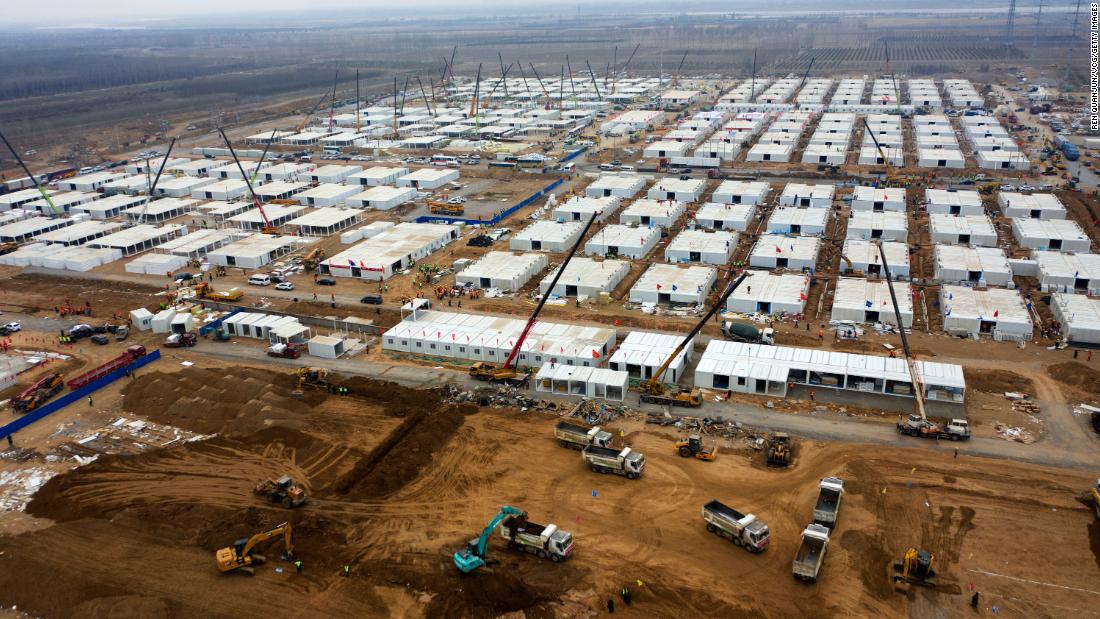(Citizen Free Press) — China is rushing to build a huge quarantine camp that can house more than 4,000 people, following a Covid-19 outbreak this month that has left tens of millions of people under strict confinement.
The quarantine camp is located on the outskirts of Shijiazhuang, the provincial capital of Hebei province, which surrounds the country’s capital Beijing.
China has largely contained the spread of the virus, and much of the country has returned to normal. However, a sudden spike in cases has alarmed officials and raised concerns ahead of the Lunar New Year, the biggest annual festival, during which hundreds of millions of people are expected to travel to visit family members.
Officials in Shijiazhuang, where the outbreak is centered, are running massive tests and strict closures, moving entire villages to centralized quarantine facilities, in a bid to slow the spread of the virus.
The new quarantine camp will house close contacts of confirmed COVID-19 patients, as authorities continue an extensive tracking and testing program.
It was originally planned to house 3,000 people, but has since expanded to a capacity of 4,160. More than 4,000 construction workers did “six days and six nights of work” to complete the first phase, Shijiazhuang Deputy Mayor Meng Xianghong reported Tuesday.
Authorities began construction on January 13 and the first section of the camp is now complete and ready for use, while construction continues in its second phase, according to state broadcaster CCTV.
Each prefab room is expected to measure 18 square meters and will feature a bathroom and shower, desks, chairs, beds, Wi-Fi and a television, according to CCTV.
The ambitious task recalls previous efforts, in the initial stages of the pandemic, during which authorities built several medical facilities from scratch, including a 1,000-bed hospital in just 10 days.
On Tuesday, China reported 103 new confirmed cases and 58 asymptomatic infections, which are counted separately, spread across four provinces. Hebei province now has a total of 818 active locally transmitted cases and more than 200 asymptomatic infections, according to the provincial health commission.
Last Wednesday, a patient died in Hebei, the country’s first covid-19-related death in 242 days.
The total number of confirmed coronavirus cases in mainland China is now 88,557, while the official death toll stands at 4,635.
In an effort to contain the outbreak, authorities closed Shijiazhuang on January 8, and the 11 million residents were unable to leave the city.
Since then, more than 20,000 citizens from 12 villages in Shijiangzhuang have been relocated to other quarantine sites as a preventive measure, Chinese state media CGTN reported last week.
To date, more than 17 million people have been tested in Hebei, and authorities carry out a second round of massive tests in Shijiazhuang and the cities of Xingtai and Langfang.
Hebei authorities are now urging residents to stay home, and officials are dispatched to urban and rural areas to enforce the measures and ensure that people do not travel through the province to Beijing.
In response to the perceived threat, Beijing authorities have stepped up testing and tracing after the cases were confirmed in the Daxing district furthest from the capital, and announced on Wednesday that they would close two nearby subway stations until further notice.
In the northeastern province of Jilin, 102 cases have been linked to the so-called “super spreader”, a vendor who traveled from his home province of Heilongjiang.

